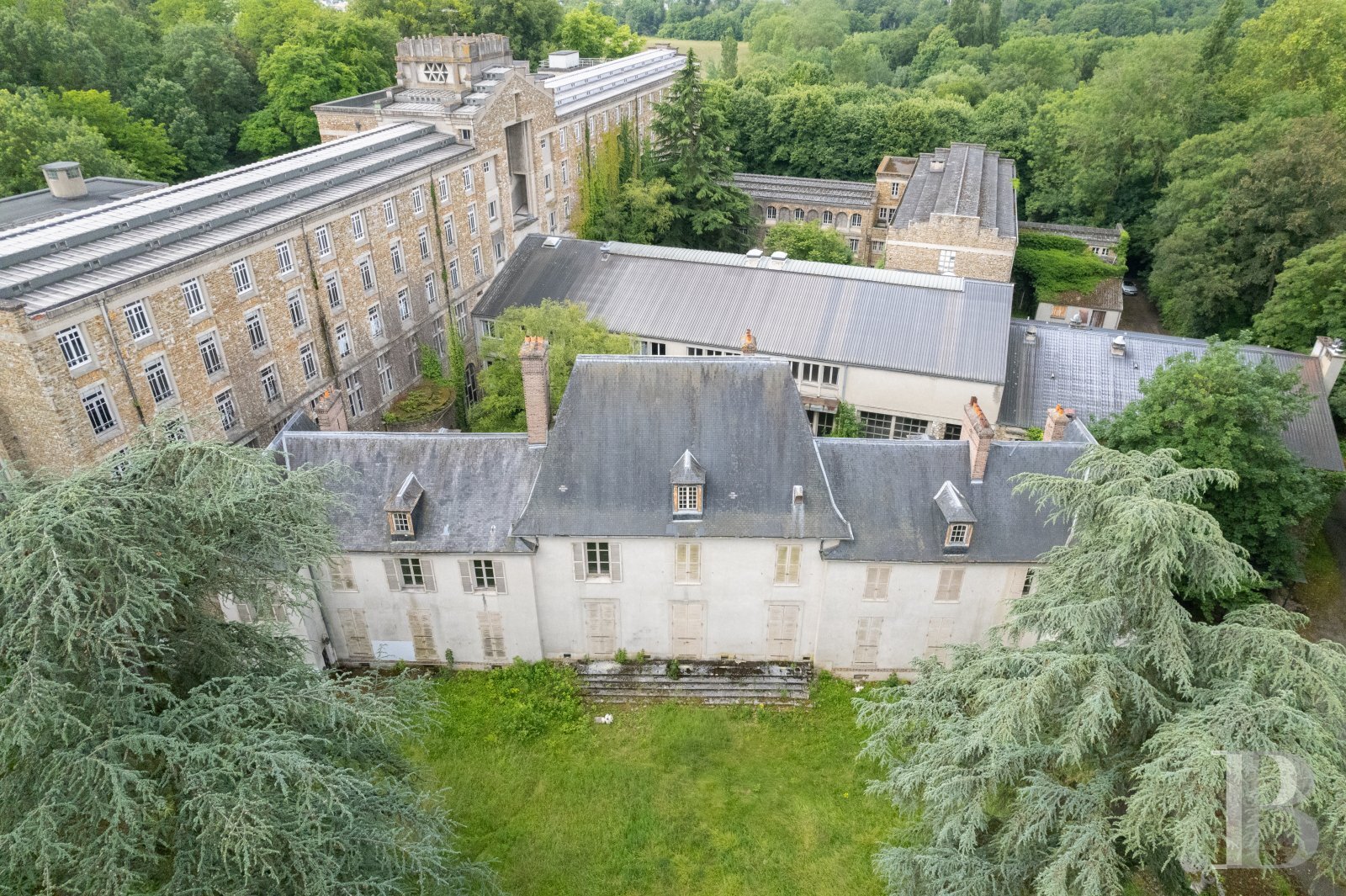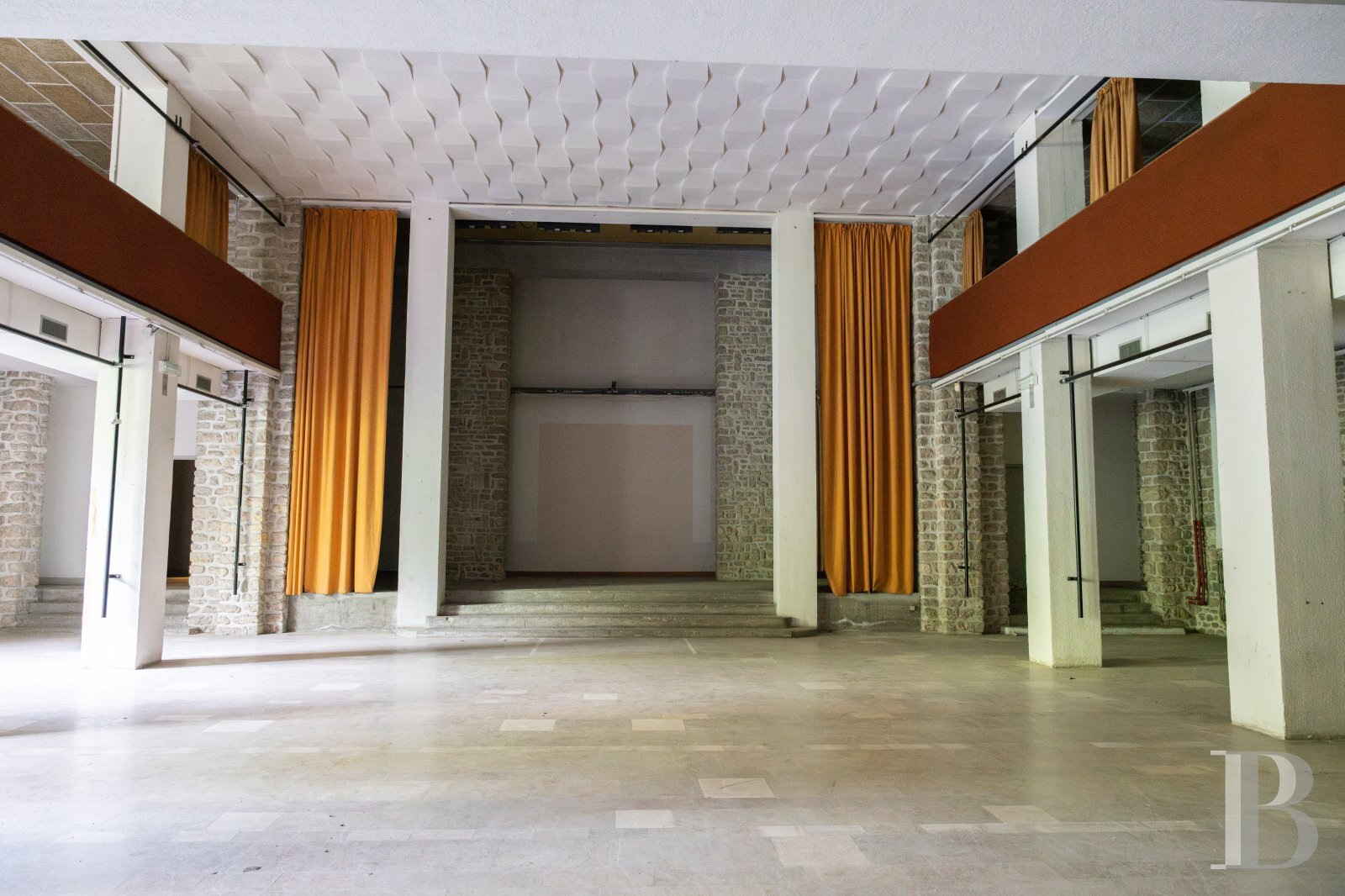A 17th-century chateau and the largest Dominican school of theology in France, with a floor area of approximately 16,000 m² and 8 hectares of grounds,
A 17th-century chateau and the largest Dominican school of theology in France, with a floor area of approximately 16,000 m² and 8 hectares of grounds, 40 minutes south of Paris.
The estate is located in the Ile-de-France region, approximately 30 kilometres southeast of Paris in the Essonne department, and only a few minutes away from an RER station. Close to the N104 A-road and A6 motorway, which lead to Paris to the north and the rest of France to the south, the property is also located near public woodlands. The neighbouring towns, less than 30 minutes away, offer all essential services for daily life, such as schools, supermarkets, a hospital as well as a regional shopping centre.
A driveway scattered with lime trees leads to the imposing front door of the former monastery. Divided into two different sections, the property is characterised by the massive heft of its buildings, which emerge abruptly from the verdant environment.
The first and largest building represents the former monastery. Built at the beginning of the 1930s at the instigation of the Parisian architect Eugène Chfflot, it stands out thanks to its Art Deco style. During World War II, its construction was halted before it was started back up again around 1956 thanks to the architects Paul Picot and Jean Fayeton. With buhrstone walls punctuated by tall windows, some of which are slender and arched, it has a stepped roof, while the central building is topped with a rooftop terrace, itself crowned with a stylised tower, the stone guardrail of which was designed to resemble crenellations.
As for the façades' different levels, these are adorned with stringcourses, white stone crosses embedded in the walls, columns, pilasters with round bases and plainly-designed capitals. The building thus forms a coherent ensemble, characteristic of recent architecture from the 20th century.
The second and oldest building is the chateau. Dating from the 17th century, it was built over the foundations of a modest house constructed in the 16th century and stands out thanks to its classical style, typical of the Grand Siècle. Facing the grounds to the northeast, the plaster-coated, central three-storey building is flanked by two wings connecting two lateral pavilions. With large-paned windows covered by louvred shutters, the building is topped with a hipped slate roof punctuated by hipped dormer windows with rolled eaves. The southwest façade repeats the same configuration, the only difference being that the central dormer window is rounded, decorated with sculpted stone caryatids and secured by a wrought-iron guardrail.
Having conserved its initial layout, the chateau was nevertheless remodelled over time by each of its owners - such as Jean-François de Guénégaud, advisor to the King and Puisne Baron of the Courts of Accounts, Guillaume Le Normant d'Etiolles, husband of the Marchioness de Pompadour, as well as Joseph-Michel-Anne Le Soufaché, a great architect during the Second French Empire - who built various private Parisian mansions commissioned by aristocratic or bourgeois families, like the one owned by the Montesquiou-Fézensacs on the Quai d'Orsay or the Sommiers at 20 rue de l'Arcade in Paris's 8th arrondissement, now the Hôtel Alfred Sommier.
Surrounded by verdant grounds of approximately 8 hectares, the property is entirely fenced in.
The Former MonasteryWith five storeys, its four wings are positioned around a central garden in which an imposing Lebanon cedar stands.
Behind its impressive wooden double door decorated with wrought-iron hinge strips is a large entrance hall. Although at first glance it looks like a maze, the space gradually starts to make sense. The wide hallways lead to various rooms, great halls and amphitheatres, while the main room cadenced with columns, the former refectory, opens onto a hallway that leads to a large grand ...





